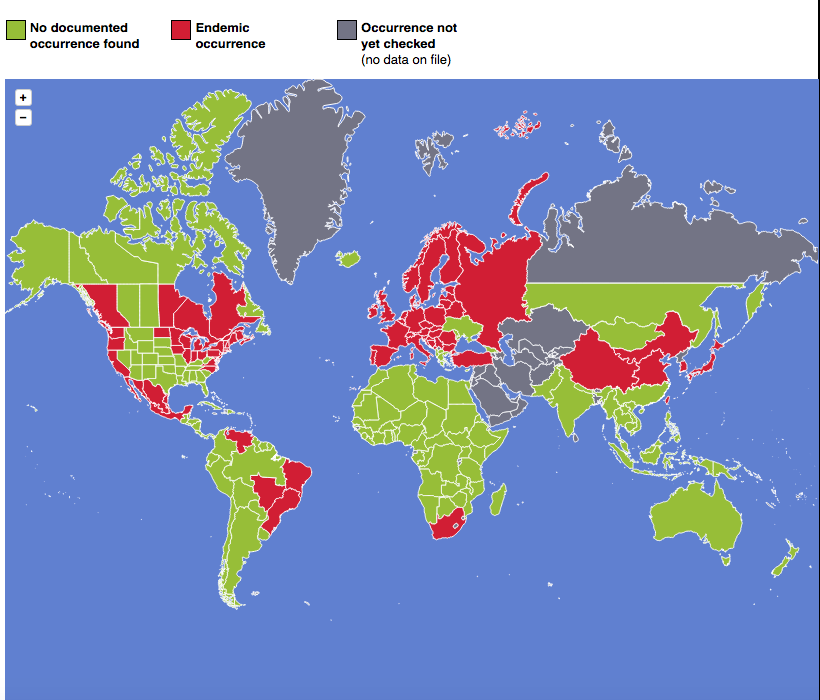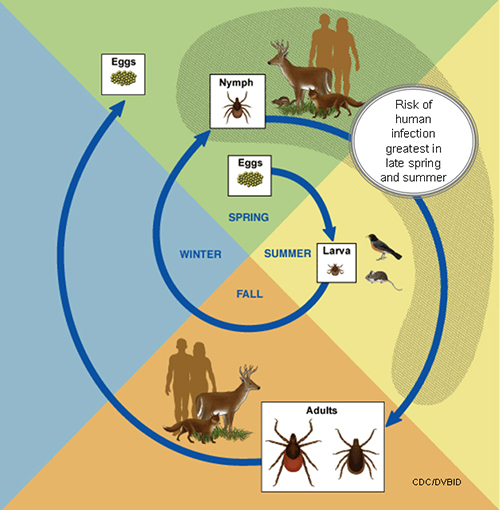
Lyme disease is increasingly prevalent and critical to prevent. We've had two friends infected by Lyme disease, and while both fortunately took antibiotics in time and recovered (in the case of one, is recovering) it's an important disease to prevent. Miss the window of treatment, and you could have chronic Lyme disease, for which there is no cure. It can involve chronic fatigue, considerable pain and aching joints and muscles, arthritis, inflammation of the brain and spinal cord, irregular heart rhythms, and memory problems. In some cases Lyme disease is even fatal, but even in the majority of cases where it's not, it's a very debilitating disease.
The U.S. CDC estimates that over 300,000 new Lyme disease cases occur annually in the U.S. alone, to say nothing of Europe and Asia, and Lyme disease is estimated to incur $1 billion per year in U.S. healthcare costs.
How Do You Get Lyme Disease?
Lyme disease in humans is transmitted by ticks, and the main culprit in the Northeastern U.S. (which is where the disease is most prevalent) is the deer tick, Ixodes scapularis. Many of these ticks, as larva or nymphs, are infected by the Lyme disease bacteria, Borrelia burgdorferi, by feeding off of infected animals such as mice and deer (on the East Coast) or squirrels (on the West Coast). Most often, humans are infected by the bites of infected, immature ticks (nymphs), which are tiny, less than 2 mm. in size, about the size of a poppy seed.
Ticks don't fly or jump, but attach to humans from grass or a shrub where it is waiting, when a human passes by. The risk of human infection is greatest in late spring and summer, as this CDC Tick Lifecycle chart shows:

Tips and Precautions to Prevent Lyme Disease
Anytime you'll be in or near a wooded area (for us, this even includes our son playing in the backyards of friends with houses outside the city) you'll want to take these precautions:
- Treat shoes and socks with permethrin, an insecticide that has been shown to be highly effective in preventing tick bites. Note that while safe on clothing and human skin, it is toxic to bees, fish and aquatic life, so do not spray clothing near flowers or water sources
- Cover up as much as possible; if wearing long pants, tuck them into socks, and wear a hat, since it can be particularly challenging finding a tick that has attached to one's scalp.
- Perform a daily tick check in good light, with your glasses on if you wear them, as the ticks and nymphs are so tiny. The sooner you remove a tick after it has attached, the lower your chance of being infected by Lyme disease, although it is always a risk if you find a tick attached to you.
- Even if you haven't found a tick, be alert for a fever or rash of any kind; see your doctor.
Discover a Tick?
If, while conducting a tick check, you do discover a nymph or adult tick attached to you or the person you're checking, you'll want to use tweezers to pull it out, making sure to also pull out the head, which will be strongly attached to the skin where it's been feeding.
You should then immediately have your doctor prescribe you antibiotics; usually this will be doxycycline or amoxicillin, and you'll need to take these for 2-4 weeks–check with your doctor and pharmacist.
Here's a short video from the New York State Department of Health on How to Remove a Tick:
In Which Countries Has Lyme Disease Been Reported?
Lyme disease is most common in forested areas of the northeastern U.S., Central and Eastern Europe, Japan, Northwest China, and Eastern Russia, but there have also been cases all over Western Europe, in Canada, in most states of the U.S., Mexico, Brazil, South Korea, Taiwan, Turkey, and other countries.
Is There a Vaccine Against Lyme Disease?
You might wonder why there isn't a vaccine–there used to be one, called LYMErix, developed by GlaxoSmithKline (SmithKline Beecham at the time), but it was pulled off the market in 2002, in the face of a class action claiming adverse reactions, and due to low demand, even though the vaccine was 80% effective. While there have been other efforts since then, there is currently no vaccine available to the public, and currently there is only a vaccine for dogs.
Have you or anyone you know contracted or been at risk for Lyme disease?
Recommended Posts
5 Reasons Kids Travel Better Than Adults
Surprisingly Healthy Airline Food
How Not to Get Sick on a Plane
Need Award Booking Help? Our fee is as low as $75 per ticket if you book your hotel through us.
If you enjoyed this, join 200,000+ readers: please follow TravelSort on Twitter or like us on Facebook to be alerted to new posts.
Become a TravelSort Client and Book Your Hotel with Virtuoso or Four Seasons Preferred Partner Benefits!